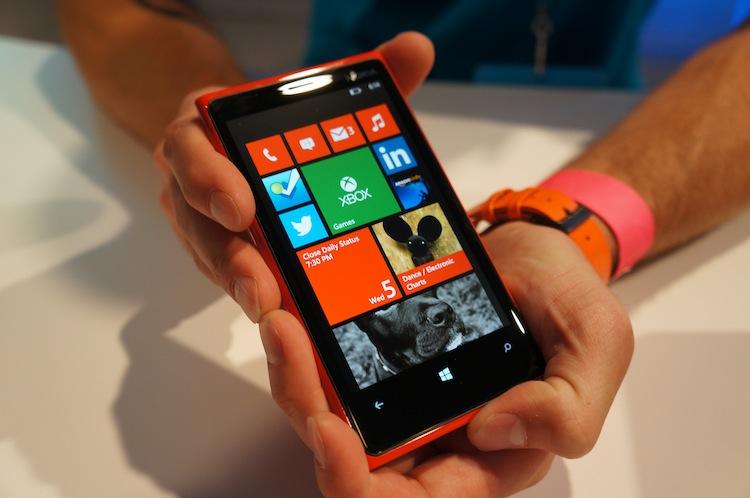
When Nokia announced the 808 PureView at Mobile World Congress earlier this year, the Finnish firm spoke straight to my heart. While the 808 itself was about 90 percent camera and 10 percent phone, it was the proof of concept that had me swooning: smartphones can have fantastic cameras.
When the first rumors alleged one of Nokia's forthcoming Windows Phone handsets would come with PureView technology in tow, I was sold. There were several ways Nokia could have got it wrong, like making another conceptual proof device that was more camera than phone, or making a Lumia handset as large and clunky as the 808. No doubt, the Lumia 920 is a chunky device, and it has a decent amount of weight to it. But Nokia managed to pull it together and produce a pretty spectacular smartphone.
And when Nokia announced Lumia 920 in New York in September, I was on-site and knew then that I wanted to give Windows Phone another chance. I wanted to try Windows Phone 8 and a second-generation Lumia.
By all means, I still do. But I definitely have my reservations about Windows Phone 8. I have used Microsoft's budding platform at least a half dozen separate times and the verdict has been mostly the same every time. Windows Phone is still in its infancy. There are simply too many compromises that have to be made on the part of the user to switch from something like Android or iOS to Windows Phone.
Granted, Windows Phone 8 is a significant upgrade from earlier versions. It brings several hardware requirements up to par with other platforms, such as support for 720p display resolution, multi-core processor architecture, micro SD cards and NFC. And, among other things, it bears an update interface.
Knowing all of this and what the Lumia 920 entails, I wrote a piece last month explaining exactly why I'm still wary of making the switch to Windows Phone. The brunt of my hesitation stems from my investments in other platforms, such as hundreds of dollars I've spent on applications for Android and iOS and my reliance on Google Apps support. Another cause for worry is the painfully slow resume times, which have instilled a bit of frustration in me each time I've used Windows Phone.
And another major concern is one Windows Phone users and potential converts from rival platforms have all complained about to Microsoft. Notifications – or the lack of a decent notification system. Evan has written about it, and I've vented my frustrations more than once.
It's not that notifications in Windows Phone are necessarily bad. They're just not great in any way, and unless you have a Live Tile for every application, there's no easy way to tell if you've missed something, especially if you fly past your lock screen.
The initial notification is very similar to that of the newest implementation of banner notifications on iOS. You get a new text message or email and a banner or "toast" notification is temporarily shown at the top of the display. You can tap to act immediately. But if you ignore the notification, it disappears and can later be found as a blip on a Live Tile. And if you miss a notification, it may or may not display on the lock screen, depending on the preference of the developer.
The issue here is that there is no single location within the operating system to check missed items and notifications. After the initial banner, notifications are spread out across the system and can be fairly difficult to track down, whereas iOS has Notification Center, Android has the pull-down notification shade and even Flow in BlackBerry 10.
Ask any mobile user. Notifications are important. And missed notifications, particularly ones that are difficult to locate after the fact, are not a good thing. Miss one too many text messages or emails and you could upset your boss, worry your friends and family or miss an important event.
What's worse is that notifications were on the table for Windows Phone 8 and Microsoft, apparently, felt they weren't important enough to make the cut. Yesterday, during a session on notifications at Microsoft's Build conference, Microsoft's Thomas Fennel alluded that the company had contemplated a central area for notifications. When asked by an audience member why there was no such notification center, Fennel answered, "Because we ran out of time," reports Tom Warren of The Verge. Fennel went on:
"It's very very important to me… we get tons of feedback from developers that they want something like that as well. I promise we're thinking very very hard on that one."
Last Sunday, Windows Phone turned two. It has undergone several minor updates and one major update, moving it a whole number point – from 7 to 8. Many of the highly requested features have been added, and the platform is definitely beginning to walk on its own a little. And I'm happy for Microsoft. I want to see Windows Phone succeed just as much as the next guy.
But how is it that Microsoft has yet to implement a better, centralized notification system? I don't think Fennel could have given a worse answer to such a great question. "Because we ran out of time." That tells us one thing: Microsoft needs to rethink the priorities for Windows Phone.
Live Tiles only display so much. Notifications are important, they should be priority. And to be perfectly honest, this is one of the only reasons I'm growing more and more skeptical about making the switch to Windows Phone. A half-decent aggregation of notifications is vital.
How do you feel about the lack of a better notification system, ladies and gents? Is it affecting your decision to switch to Windows Phone? Or is there something else keeping you from switching?